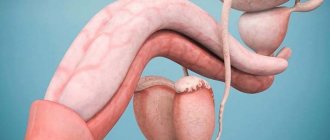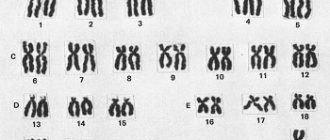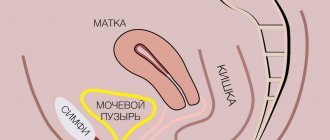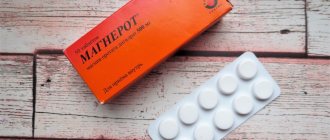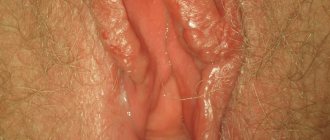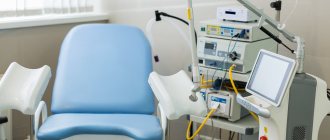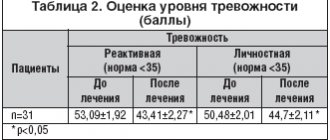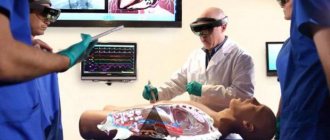Chitosan is a polysaccharide and is a component of chitin. Produced from the shells of crustaceans, the outer covering of insects and the wings of butterflies. It is found in large quantities in the shell of the red crab. Included in seaweed and mushrooms.
The substance is chemically bound to cellulose, which is the supporting material of the plant cell wall. Chitosan belongs to the class of dietary fiber. In the gastrointestinal tract it is converted into a gel. Able to combine with fats, toxins, cholesterol. It has a destructive effect on them. It is excreted from the body unchanged, naturally.
A natural biological substance regulates many physiological processes in the body. Widely used in medicine. Included in products to combat intestinal dysbiosis and gastrointestinal disorders. Nutritionists prescribe chitosan as a dietary supplement for prevention and cleansing the body of toxins. Once in the stomach, it is well absorbed. It breaks down into simple components and is absorbed into the blood. The drug is used to treat injuries, cuts, burns. Accelerates skin regeneration. Stimulates healing without scarring.
Nosological classification (ICD-10)
- E11 Non-insulin-dependent diabetes mellitus
- E65-E68 Obesity and other types of excess nutrition
- E78.0 Pure hypercholesterolemia
- I10 Essential (primary) hypertension
- I15 Secondary hypertension
- I20-I25 Coronary heart disease
- I70 Atherosclerosis
- K59.8.0* Intestinal atony
- K59.8.1* Intestinal dyskinesia
- K63.8.0* Dysbacteriosis
- K80 Gallstone disease [cholelithiasis]
- K82.8.0* Dyskinesia of the gallbladder and biliary tract
- M10 Gout
- M81 Osteoporosis without pathological fracture
- T78.4 Allergy, unspecified
- X40-X49 Accidental poisoning and exposure to toxic substances
Component Properties
Chitosan (an aminosaccharide obtained from crustacean shells) lowers the level of cholesterol, uric acid and glucose (in patients with diabetes) in the blood, has antibacterial and antifungal properties, and improves the absorption of calcium from food. Dietary fiber (chitosan) in combination with vitamin C and citric acid sorb fats, prevent their absorption and accumulation in cells and tissues, and together with MCC, enhance intestinal motility, accelerate the removal of dietary fats, wastes and toxins from the body, and help normalize intestinal microflora , provides a feeling of satiety.
The article discusses the antiallergic activity of chitin and chitosan and the biochemical reactions they cause in a living organism, as well as the prospects for using chitosan as a carrier of drugs used in the treatment and prevention of various forms of allergic pathology.
Introduction
Chitin, consisting of N-acetylglucosamine residues, and its derivative, chitosan, in which glucosamine residues predominate, are natural polymers with a wide range of biological properties [1]. These biopolymers are capable of stimulating the immune system through the activation of macrophages, fibroblasts, the complement system, and the migration of polymorphonuclear leukocytes. Due to their biocompatibility and biodegradability, chitin and chitosan are already used as biomedical materials and components of cosmetics. Recently, chitosan has been considered as one of the promising materials for creating polymer matrices for the delivery of drugs and DNA.
Rice. 1. Structural formula of chitin pentamer (A) and chitosan pentamer (B)
This review examines aspects of the use of chitin and chitosan for therapeutic purposes in allergic diseases: it describes the antiallergic activity of the biopolymers themselves and the biochemical reactions they cause in a living organism, as well as the prospects for the use of chitosan as a carrier of drugs used in pathogenetic therapy in order to increase their pharmacological activity in the treatment and prevention of various forms of allergic pathology.
The use of chitin against allergic diseases
Inflammatory processes during allergic reactions are accompanied by the participation of Th2 cells, which secrete the corresponding cytokines and also contribute to the formation of immunoglobulins of classes E and G1. One way to prevent the allergic process mediated by Th2 cells is to activate CD4+ cells of the Th1 type. Th1 cells suppress the IgE response and suppress the differentiation of Th2 cells and their secretion of IL-4, IL-5 and IL-10. This Th1 cell activity is mainly due to IF-γ, which has an effect opposite to that of IL-10. In this regard, any factors promoting the differentiation of Th1 cells automatically inhibit the development of Th2 cells and allergic reactions [2, 3].
With the participation of Th1 cells, the body’s immune response to the presence of bacterial cells is carried out [4]. Mimicking bacterial cells, Y. Shibata and co-authors tried to use chitin microparticles of various sizes to activate the Th1-mediated immune response in order to prevent allergic manifestations in mice sensitized to the allergen [4-6]. It has been shown that oral and intranasal administration of chitin microparticles measuring 1-20 microns can have a preventive and therapeutic effect. At the same time, there was a decrease in the level of IL-4, IL-5 and IL-10 in spleen cells, serum IgE, and tissue infiltration of eosinophils in lung tissue [4-6]. Histological studies of the lungs of mice that were exposed to allergens also confirmed the effectiveness of the preventive and therapeutic effects of chitin microparticles - when exposed to an allergen, an inflammatory cellular reaction developed in the lung tissue, and the use of chitin particles significantly reduced the severity of inflammation, and the tissue structure was close to healthy, which was expressed in a reduction in the number of columnar secretory epithelial cells lining the mucous membranes of the respiratory tract, maintaining the original size and morphology of the epithelial layer, basement membrane and subepithelial layer of smooth muscles [6, 7].
Only those chitin microparticles that could be absorbed by phagocytes had the ability to induce IF-γ in mouse spleen cells. Dispersed chitin and chitin microparticles larger than 50 μm in size, which were not phagocytosed by macrophages, did not have such activity [5]. The ability of chitin microparticles to activate macrophages was inhibited if the particles were coated with mannan or mannan was added to the medium. Thus, in the recognition of chitin microparticles, mannose receptors located on the surface of macrophages and the superfamily of Toll-like receptor proteins may play a key role, through which a signal is received to enhance the synthesis of IF-γ and other cytokines characteristic of the Th1-mediated immune response .
The use of chitosan for allergic diseases
Recently, antiallergic properties have been discovered in chitosan, a deacetylated derivative of chitin. The antiallergic effect of chitosan polymer is associated with its effect on macrophages [8]. It has been noted that in patients with atopic bronchial asthma, upon contact with an allergen, macrophages form a large number of micropseudopodia on the cell surface. Under the influence of chitosan, the morphology of macrophages did not change and the formation of pseudopodia did not occur. It has been shown that chitosan is able to inhibit a cascade of reactions in macrophage cells that is activated by protein kinase-Cζ upon exposure to an allergen. Deactivation of protein kinase-Cζ by chitosan reduces hyperphosphorylation and subsequent degradation of the NK-κB transcription factor inhibitor, which binds to the immunoglobulin light chain specific in the kappa gene enhancer in B cells, and also interacts with the regulatory regions of genes and activates the transcription of certain groups of genes, including proinflammatory mediators [8].
The antibacterial and sorption properties of chitosan can also play a certain role in the prevention of allergic reactions. Thus, in patients with atopic dermatitis, the addition of a bacterial skin infection is observed in more than 30% of cases. The leading etiological microbial agent infecting the skin in this disease is Staphylococcus aureus [9]. This allows us to consider chitosan as a promising antimicrobial agent for local therapy of skin infections of staphylococcal etiology [10, 11].
The development of atopic eczema in patients infected with S. aureus is largely determined by the ability of this bacterial species to produce a wide range of toxins and superantigens that can induce and maintain an inflammatory response in the dermis [12]. There is evidence that chitosan at the level of gene regulation inhibits the production of toxins by staphylococci such as TSST-1, enterotoxins B and C, and delta-hemolysin [13]. Another way to eliminate toxins may be their sorption by a chitosan polymer, similar to the binding of endotoxin from gram-negative bacteria, the effectiveness of which has been demonstrated in animal model experiments [14].
Thus, the antimicrobial and sorption properties of chitosan polymer make it possible to use this polymer as a component of powders, gels and ointment forms for topical application on infected skin areas in atopic pathology.
The use of chitosan as a matrix for the delivery of therapeutic agents
Recently, intensive research has been carried out on the possibility of using chitosan as a polymer matrix for the delivery of drugs with prolonged release, since most substances themselves are characterized by low permeability through biological membranes [15, 16]. In addition, many currently used drugs, despite their unconditional effectiveness in treating a particular disease, cause unwanted side effects. A perfect drug system must deliver the drug to the diseased organ and release it at the right time and in the minimum amount necessary to achieve a therapeutic effect. The creation of such a system would make it possible to significantly reduce the doses of medicinal substances and, therefore, avoid their adverse reactions.
Traditional routes of drug administration—nasal and oral—avoid the risk of infection and pain associated with the parenteral route. The release rate is controlled by the amount of drug in the matrix, its solubility in the polymer, the degree of gel hydration, and the kinetics of swelling-dehydration of the polymer. The rate of sorption and desorption can be purposefully changed by introducing into the gel ligands that can specifically bind to the sorbed substance.
Currently, there are examples of the successful use of a number of polymer systems based on chitosan for the delivery and controlled release of substances through mucous membranes and, in particular, during their nasal and oral administration [17]. The main requirements for the dosage form intended for nasal and oral administration are the following: ensuring protection of the delivered substance from the degrading action of enzymes and the acidic environment of the stomach (for oral administration), the presence of increased mucoadhesive activity to the surface components of the mucous membranes, controlled release of the drug (for oral administration - in the neutral environment of the small intestine or rectum).
Thus, theophylline is a heterocyclic alkaloid of plant origin, the action of which is based on the relaxation of bronchial smooth muscles, but the use of which is difficult due to the need for precise adherence to the dosage, since its excess can lead to side effects, for example, cardiac arrhythmia, headache and nausea, resulting in Currently, inhaled glucocorticoids are becoming more common. In addition, theophylline suppresses the activation of neutophils and eosinophils at a concentration lower than that required for bronchorelaxation [18]. To reduce side effects and increase the effectiveness of the therapeutic effect of theophylline, it was proposed to use the alkaloid as part of chitosan microparticles. By nasally administering such a complex to mice sensitized with ovalbumin, a decrease in pulmonary inflammation, pathological changes in the structure of the epithelium, hyperplasia of columnar cells and hypersecretion of mucus was achieved. An increase in apoptotic cells in the tissues of the airways was noted [19].
The active substance administered nasally has limited time to penetrate the mucous membrane of the nasal passage due to its constant self-cleaning. In order for the active substances to remain on the mucous membrane longer, they can be included in the complex, one of the components of which has high mucoadhesive activity. Such a complex will adhere to the mucosa for a longer period of time, providing prolonged release of the drug.
Chitosan has good mucoadhesiveness due to its numerous amino groups, which can interact with sialic and sulfonic acid residues on mucosal surfaces [19]. An increase in the mucoadhesive activity of chitosan can be achieved by introducing thiol groups into the polymer, which are believed to form disulfide bonds with cysteine-containing subdomains of mucin glycoproteins [20, 21]. Due to this, microparticles based on thiolated chitosan were more effective in delivering theophylline compared to microparticles from an unmodified polymer [19]. In addition, chitosan increases epithelial permeability by weakening the connection between epithelial cells [22].
The delivery of antiallergic substances as part of more complex complexes was demonstrated, where the ethylcellulose core of the microparticle acted as a carrier of the drug, loratadine, and the chitosan shell provided the mucoadhesive properties of the complex [23]. The effectiveness of delivery using microparticles with a similar structure has been shown for another antiallergic substance, promethazine [17]. It should be noted that varying the quantitative ratio of ethylcellulose and chitosan in the composition of microparticles influenced the level of their loading with the delivered substance, the degree of their maximum hydration and swelling, which determined the kinetics of release of the drug component from the complex and made this process controllable.
Chitosan can also be used as a matrix for specific immunotherapy using allergens. Since peripheral T-cell tolerance can be induced by delivery of soluble antigen through the mucosal mucosa [24], but specific immunotherapy, while very effective in some cases, can sometimes cause serious complications due to IgE-mediated activation of effector cells, it has therefore been proposed to administer allergen as part of a complex with chitosan [25]. This ensured both the efficiency of delivery of the substance through the mucous membranes and the ability to control the duration of release and the amount of allergen entering the body. Control of these parameters is very important because they determine the activation kinetics of antigen presenting cells (APCs) [26], influencing the amount and affinities of the MHC-peptide complex, the expression of co-stimulated molecules and cytokines that are produced during the presentation of APCs to T cells, according to regulating the induction of Th1 and Th2 responses differently [25].
It was shown that nasal administration of a peptide, which is an immunodominant epitope of Der p 1 allergen from Dermatophagoides pteronyssinus, to mice, in combination with chitosan, contributed to a decrease in the production of IL-5 and IL-13 by splenocytes. In sensitized mice, the complex of the peptide and chitosan reduced lung eosinophilia and the content of IL-4 and IL-5, while the antigen itself administered in the same amount had no effect [25].
Almost all biochemical processes occurring in the body are determined by the expression of the genetic apparatus of cells. During allergic reactions, the expression level of certain genes changes in an undesirable direction. Thus, the level of synthesis of some cytokines, for example, IL-5, increases, which is preceded by transcription of the corresponding gene and the formation of mRNA. IL-5 synthesis can be inhibited by introducing antisense nucleic acid oligomers into the cell, which, due to complementarity, will specifically block translation from the mRNA of this cytokine. Thus, the cascade of undesirable reactions, the launch of which is determined by the increased concentration of IL-5 in cells and tissues, will be stopped. However, the use of such antisense polynucleotides in experiments modeling allergic rhinitis in mice was ineffective, since native oligomers were subject to rapid enzymatic degradation. The use of oligomers in combination with chitosan when administered nasally to mice provided a therapeutic effect. In the cells of the mucous membranes of the airways, there was a decrease in the synthesis of IL-5, and the level of IgE in the serum remained at the normal level. The mucous membranes themselves in mice that were injected with the complex retained a normal appearance compared to those in mice whose allergic rhinitis was not treated or which were injected with native oligomers [27].
As part of a complex with chitosan, the effectiveness of transdermal delivery of natriuretic peptide receptor siRNA was demonstrated. Natriuretic peptide is a protein associated with allergic manifestations, which binds to its receptors located on the surface of various cells, activating intracellular guanylate cyclase and the formation of cGMP, which leads to the activation of the corresponding protein kinases and changes in the functioning of membrane ion channels, ultimately leading to the launch of some cellular processes involved in the inflammatory response [28]. Introduction of siRNA into tissue led to silencing of the natriuretic peptide receptor gene, which ultimately contributed not only to the reduction of allergic inflammatory processes, but at the early stages of therapy prevented the switch of the immune system towards the Th2 response. The use of native siRNA was ineffective, apparently due to the cleavage of molecules by nucleases [29].
Thus, delivery of various therapeutic agents using chitosan polymer can become one of the effective tools in the treatment of allergic manifestations.
Application of chitosan as a DNA vector
Due to its polycationic nature, chitosan is capable of forming polyelectrolyte complexes with negatively charged polymers, such as nucleic acids [30, 31]. Therefore, chitosan can be used to design DNA-containing carriers to obtain genetically modified cells. Transfection of eukaryotic cells is a powerful tool for targeted changes in the genome and at the same time one of the greatest achievements in molecular and cellular biology of recent times, opening up unlimited possibilities in medicine in the form of gene therapy.
Currently, several approaches are being developed to create effective tools for delivering DNA into cells. Among them are the use of cationic liposomes, as well as adeno- and retroviruses. Polymer systems, including nanoparticles and nanocapsules, are considered as a promising tool for delivering DNA into cells [15].
pH-sensitive liposomes are used to transfect cells with plasmid DNA. Under acidic conditions, they are able to bind genetic material and penetrate the cell, and when the pH changes, they merge with the endosome membrane, releasing DNA. However, their use has a number of disadvantages, such as high cost, immunogenicity, and the possibility of liposome aggregation.
The use of viruses as DNA carriers provides good transfection efficiency. And although most medical protocols are currently based on viral DNA vectors, the use of such systems is limited for several reasons: their oncogenic properties are possible; limited amount of genetic material that can be delivered by a virus; the need to comply with general biosafety rules when producing viruses.
Chitosan is a promising candidate for the design of DNA vector carriers, since delivery systems created on its basis with DNA vectors embedded in them have several advantages over all those discussed above: ligands can be covalently attached to their surface, which ensure highly specific interaction with cellular receptors; you can introduce not one, but several DNA plasmids into a cell in one nanoparticle or nanocapsule; it is possible to protect the nucleic acid from degradation by enzymes; DNA plasmids acquire a compact appearance, which prevents their mechanical rupture and facilitates penetration through cell membranes; Such nanoparticles can be freeze-dried and stored in this form for a long time without loss of activity [15, 32].
Thus, the use of chitosan nanoparticles in complex with γ-interferon DNA administered intranasally to mice provided effective transfection, which was confirmed by an increase in the level of γ-interferon synthesis in mucosal epithelial cells and in pulmonary monocytes. A protective effect was noted against methacholine-induced bronchospasm; an increase in the number of eosinophils and cellular infiltration was prevented. Prophylactic administration of the complex contributed to an increase in the level of production of γ-interferon by spleen cells and a decrease in the level of IL-4, IL-5, as well as the level of IgE in the serum. The main targets of the complex have been shown to be the bronchial epithelium and macrophages, two cell types that play an important role in the development of asthma and immunomodulation [33]. Therapeutic use of the complex in mice sensitized with ovalbumin prevented inflammatory processes in the bronchial mucosa several hours after sensitization with the allergen, and induced apoptotic processes in columnar cells of the mucosa [34].
Delivery of the γ-interferon gene is also possible using an adenoviral vector, however, such a system has some disadvantages, primarily the absence of adenovirus-specific receptors on the apical part of epithelial cells, which are expressed mainly on the basolateral surface. In the case of using a chitosan matrix, which has good mucoadhesive properties, this disadvantage is eliminated [35]. Thus, the use of a chitosan-based complex led to a more dramatic decrease in eosinophilia compared to adenoviral delivery, and although the amount of γ-interferon was smaller, the therapeutic effect was more pronounced, probably due to the more efficient delivery of DNA by the chitosan vector to epithelial cells [34] . It has been shown that, in addition to nasal and transdermal administration, oral administration of a complex of DNA and chitosan can be an effective tool for gene delivery and transfection into intestinal cells [36].
The effectiveness of this type of delivery of the cytokine gene, transforming growth factor β1 (TGF-β1), which performs a specific function in restraining autoimmune processes, has been demonstrated. In addition, TGF-β1 plays an important role in the induction and maintenance of food tolerance by inducing IgA secretion and transforming naïve T cells into regulatory T cells, which remain functional in the intestine and suppress the IgE response [37]. A complex of chitosan with a plasmid encoding TGF-β1, administered orally to mice, had a therapeutic effect against food allergies. In mice with an artificially induced food allergic reaction, the administration of a complex drug led to normalization of the body's condition by increasing the level of cytokine expression in intestinal cells: there was a decrease in the level of IL-4 and an increase in the synthesis of IF-γ in Peyer's patches of the small intestine, and the level of specific IgE in the serum decreased . The effect of the complex persisted for at least two weeks after administration, whereas the use of native TGF-β1 was short-term [38].
For specific immunotherapy, transformation of intestinal cells with oral administration of genetic material can also be used [39]. Thus, oral administration of the peanut allergen gene Arah2 in combination with chitosan had a preventive effect against food allergic reactions to this allergen. At the same time, no increase in the level of specific IgE was observed, but the level of IgG2a in the serum increased, which indicates a Th1-mediated immune response, and IgA synthesis was induced in the intestine, which indicates the inclusion of a mucosal immune response. Native DNA without chitosan had no therapeutic effect [40].
Similarly, the possibility of specific immunotherapy against the tick-borne allergen Der p 1 from D. pteronyssinus was demonstrated in a mouse model [41]. Delivery of DNA encoding the mite allergen in combination with chitosan upon oral administration caused an increase in the level of specific IgG2a, but not IgG1, which indicates the Th1 pathway of the immune response. The efficiency of transformation is associated with the mucoadhesive properties of chitosan, which allows it to interact with intestinal epithelial cells with subsequent capture of the complex by M-cells, entry into Peyer's patches and transportation to the spleen and lymph nodes, where specific immunoglobulins of classes M and G are subsequently produced. Intestinal epithelial cells villous epithelium can also capture such an antigenic complex and perform its presentation [42]. Such cells have close contact with intraepithelial lymphocytes, which are a specialized population of T lymphocytes that migrate from the peripheral blood into the layer between the basolateral membranes of epithelial cells. Thus, regulation of the T-cell response is possible. Dendritic cells located in various places in the intestine can probably also capture the complex or receive it from epithelial cells with subsequent migration to the lymph nodes, thereby supplying the necessary signal for the maturation of naïve T cells [41].
Conclusion
Thus, the possibility of using chitin and chitosan for therapeutic purposes in relation to allergic diseases, both independently and as a matrix for the delivery of drugs and DNA, expands the range of practical applications of these biopolymers. The possibility of varying the properties of these biopolymers, including through the production of various derivatives based on them, can in the future provide even more effective medical systems for the treatment of various diseases in humans.
Acknowledgments
We thank the leading researcher of the Russian Academy of Sciences A.V. Ilyina for her careful consideration of the work and the valuable comments she made.
S. N. Kulikov, Yu. A. Tyurin, R. S. Fassakhov, V. P. Varlamov
Kazan Research Institute of Epidemiology and Microbiology of Rospotrebnadzor
RAS, Moscow
Kulikov Sergey Nikolaevich - candidate of biological sciences, senior researcher. Laboratory of Immunology, Kazan Research Institute of Epidemiology and Microbiology of Rospotrebnadzor
Literature:
1. Kulikov S.N., Tyurin Yu.A., Dolbin D.A., Khairullin R.Z. The role of structure in the biological activity of chitosan. Bulletin of Kazan Technological University 2007; 6:10-15.
2. Kulikov S.N., Tyurin Yu.A., Dolbin D.A., Fassakhov R.S. Chitin and chitinases in allergic reactions. Russian Allergological Journal 2009; 1: 18-23.
3. Yarilin A.A. Fundamentals of immunology. M.: Medicine, 1999. p. 608.
4. Shibata Y., Foster LA, Kurimoto M., et al. Immunoregulatory roles of IL-10 in innate immunity: IL-10 inhibits macrophage production of IFN-γ-inducing factors but enhances NK cell production of IFN-γ. J. Immunol. 1998; v. 161; 4283-4288.
5. Shibata Y., Foster LA, Metzger WJ, Myrvik QN Alveolar macrophage priming by intravenous administration of chitin particles, polymers of N-acetyl-D-glucosamine, in mice. Infect. Immun. 1997; v. 65: 1734-1741.
6. Shibata Y., Foster LA, Bradfield JF, Myrvik QN Oral administration of chitin down-regulates serum IgE levels and lung eosinophilia in the allergic mouse. J. Immunol. 2000; v. 164: 1314-1321.
7. Ozdemir C., Yazi D., Aydogan M., et al. Treatment with chitin microparticles is protective against lung histopathology in a murine asthma model. Clin. Exp. Allergy 2006; v. 36: 960-968.
8. Chen CL, Wang YM, Liu CF, Wang JY The effect of water-soluble chitosan on macrophage activation and the attenuation of mite allergen-induced airway inflammation. Biomaterials 2008; v. 29: 2173-2182.
9. Hauser C., Wuthrich B., Matter L. Staphylococcus aureus skin colonization in atopic dermatitis. Dermatologica. 1985; v. 170: 35-39.
10. Kulikov S.N., Dolbin D.A., Tyurin Yu.A. Antibacterial properties of low molecular weight chitosan in atopic dermatitis. Russian Allergological Journal 2008;1 (supp. 1): 146-147.
11. Moon JS, Kim HK, Koo HC et al. The antibacterial and immunostimulative effect of chitosan-oligosaccharides against infection by Staphylococcus aureus isolated from bovine mastitis. Appl. Microbiol. Biotechnol 2007; v. 75: 989 – 998.
12. Breuer K., Kapp A., Werfel T. Bacterial infections and atopic dermatitis. Allergy. 2001; v. 56: 1034-1041.
13. Schlievert PM Chitosan malate inhibits growth and exotoxin production of toxic shock syndrome-inducing Staphylococcus aureus strains and group A streptococci. Antimicrob. Agents Chemother. 2007; v. 51:9:3056-3062.
14. Bolshakov I.N., Nasibov S.M., Kuklin E.Yu., Prikhodko A.A. The use of chitosan and its products in inflammatory diseases of the gastrointestinal tract. Chitin and chitosan: preparation, properties and applications. M.: Publishing house Nauka, 2002. p. 280-301.
15. Markvicheva E.A. Chitosan and its derivatives in bioencapsulation. Chitin and chitosan: preparation, properties and applications. M.: Publishing house Nauka, 2002. p. 315-326.
16. Koping-Hoggard M., Mel'nikova YS, Varum KM, et al. Relationship between the physical shape and the effectiveness of oligomeric chitosan as a gene delivery system in vitro and in vivo. J. Gene Med. 2003; v. 5:2:130-141.
17. Hafner A., Filipovi-Gri J., Voinovich D., Jalsenjak I. Development and in vitro characterization of chitosan-based microspheres for nasal delivery of promethazine. Drug Develop. Industr. Pharm. 2007; v. 33; 427-436.
18. Kobayashi M., Nasuhara Y., Betsuyaku T., et al. Effect of low-dose theophyllin on airway inflammation in COPD. Respirology. 2004; v. 9: 249-254.
19. Lee DW, Powers K., Baney R. Physicochemical properties and blood compatibility of acylated chitosan nanoparticles. Carbohydrate Polymers 2004; v. 586: 371-377.
20. Bernkop-Schnurch A., Hornof M., Zoidl T. Thiolated polymers-thiomers: synthesis and in vitro evaluation of chitosan-2-iminothiolane conjugates. Int. J. Pharm. 2003; v. 260: 229-237.
21. Kast CE, Valenta C., Leopold M., Bernkop-Schnurch A. Design and in vitro evaluation of a novel bioadhesive vaginal drug delivery system for clotrimazole. J. Control. Release 2002; v. 81: 347-354.
22. Fernandez-Urrusuno R., Romani D., Calvo P., et al. Development of a freeze-dried formulation of insulin-loaded chitosan nanoparticles intended for nasal administration. Stp. Pharma. Sciences 1999; v. 9: 429-436.
23. Martinac A., Filipovic-Grcic J., Perissutti B., et al. Spray-dried chitosan/ethylcellulose microspheres for nasal drug delivery: swelling study and evaluation of in vitro drug release properties. J. Microencapsul. 2005; v. 22:5:549-561.
24. Astori M., von Garnier C., Kettner A., et al. Inducig tolerance by intranasal administration of long peptides in naive and primed CBA/J mice. J. Immunol. 2000; v. 165: 3497-3505.
25. Hall G., Lund L., Lamb JR, Jarman ER Kinetics and mode of peptide delivery via the respiratory mucosa determine the outcome of activation versus Th2 immunity in allergic inflammation of the airways. J. Allergy. Clin. Immunol. 2002; v. 110:883-890.
26. Langenkamp A., Messi M., Lanzavecchia A., Sallusto F. Kinetics of dendric cell activation: impact of priming of Th1, Th2 and nonpolarized T cells. Nat. Immunol. 2000; v. 1: 311-316.
27. Kim ST, Kim CK Water-soluble chitosan based antisense oligodeoxynucleotide of interleukin-5 for the treatment of allergic rhinitis. Biomaterials 2007; v. 28: 3360-3368.
28. Mohapatra SS, Lockey RF, Vesely DL, Gower WR Natriuretic peptides and genesis of asthma: an emerging paradigm? J. Allergy Clin. Immunol. 2004; v. 114:520-526.
29. Wang X., Xu W., Mohapatra S., et al. Prevention of airway inflammation with topical cream containing imiquimod and small interfering RNA for natriuretic peptide receptor. Genet. Vaccin. Therapy. 2008; v. 6:7:15-23.
30. Ilyina A.V., Varlamov V.P. Polyelectrolyte complexes based on chitosan. Applied Biochemistry and Microbiology 2005; v. 41: 1: 9-16.
31. Danielsen S., Varum KM, Stokke BT Structural analysis of chitosan-mediated DNA condensation by AFM: influence of chitosan molecular parameters. Biomacromolecules 2004; v. 5: 928-936.
32. Koping-Hoggard M., Varum K.M., Issa M., et al. Improved chitosan-mediated gene delivery based on easily dissociated chitosan polyplexes of highly defined chitosan oligomers. Gene Ther. 2004; v. 11:19:1441-1452.
33. Tang C, Inman MD, van Rooijen N, et al. Th type 1 stimulating activity of lung macrophages inhibits Th2-mediated allergic airway inflammation by an IFN-gamma-dependent mechanism. J. Immunol. 2001; v. 166: 1471-1481.
34. Kumar M., Kong X., Behera AK, et al. Chitosan IFN-γ-pDNA nanoparticles (CIN) therapy for allergic asthma. Genet. Vaccines Therapy. 2003; 1(1):3.
35. Filipovic-Grcic J., Skalko-Basnet N., Jalsenjak I. Mucoadhesive chitosan-coated liposomes: characteristics and stability. J. Microencapsul. 2001; v. 18:3-12.
36. Chen J, Yang WL, Li G, et al. Transfection of mEpo gene to intestinal epithelium in vivo mediated by oral delivery of chitosan-DNA nanoparticles. World J. Gastroenterol. 2004; v. 10:1: 112-116.
37. von Boehmer H. Oral tolerance: is it all retinoic acid? J. Exp. Med. 2007; v. 204: 1737-1739.
38. Li F, Wang L, Jin XM, et al. The immunological effect of TGF-beta 1 chitosan nanoparticle plasmids on ovalbumin-induced allergic BALB/c mice. Immunobiol. 2009; v. 214:2:87-99.
39. Moffart MF, Cookson WOC Gene therapy for peanut allergy. Nat. Med. 1999; v. 5:4:380-381.
40. Roy K., Mao HQ, Huang SK, Leong KW Oral gene delivery with chitosan-DNA nanoparticles generates immunological protection in a murine model of peanut allergy. Nat. Med. 1999; v. 5:4:387-391.
41. Chew JL, Wolfowicz CB, Mao HQ, et al. Chitosan nanoparticles DNA encoding house dust mite allergen, Der p 1 oral vaccination in mice. Vaccine. 2003; v. 21: 2720-2729.
42. Hershberg RM, Mayer LF Antigen processing and presentation by intestinal epithelial cells—polarity and complexity. Immunol. Today. 2000; v. 21:1:123-128.
Recommended
For the prevention and complex treatment of cholesterol metabolism disorders (atherosclerosis, hypercholesterolemia), biliary or colon dyskinesia, cholelithiasis, intestinal atony, dysbacteriosis, gout, osteoporosis, non-insulin-dependent diabetes mellitus, hypertension, coronary artery disease, cancer, as well as to reduce excess weight body and cleansing the body of waste and toxins in case of allergic diseases, intoxications or for the purpose of general improvement of the body.
Chitosan as a food additive
Chitosan is a substance from the group of aminopolysaccharides, which is extracted from the chitinous cover of crustaceans that inhabit the marine world. Rich in natural dietary fiber, it is able to combine with fats and remove them from the human body, preventing them from being absorbed.
It is produced by the pharmaceutical industry in the form of tablets and capsules for oral administration, and is also added to skin care creams and hair shampoo.
The composition of the drug depends on the manufacturer. For example:
- one capsule of Chitosan from the pharmaceutical plant MILVE AD contains 0.25 g of chitosan, 60 pieces in a package;
- one tablet of Chitosan-Evalar contains 0.125 g of chitosan, 100 pieces in a package;
- One tablet of Chitosan EKKO plus-forte contains 0.25 mg of chitosan, 150 pieces in a package.
Microcrystalline cellulose, magnesium stearate are present as additional substances; the dietary supplement may also contain ascorbic acid, chromium picolinate, gelatin and other components necessary for the formation of the shell.
Capsules are sold in plastic jars, tablets are packaged in plates with cells, which are placed in a cardboard box.
Directions for use and doses
Orally, for adults and children over 12 years of age. In complex therapy - 3-4 tablets. 2 times a day, during meals. Duration of treatment is 25–30 days. The course can be repeated 2-3 times a year if you follow a diet adequate to the underlying disease. Preventively - 2 tables. 2 times a day, for a long time. To reduce body weight - 4 tablets. 3 times a day with water for 2–3 months. To control body weight - 1 table. before each meal of fatty food, following a low-carbohydrate diet.
Reviews
On the Internet you can find different opinions about dietary supplements with chitosan. Some buyers leave rave reviews: the capsules helped reduce appetite and lose weight.
It is noted that the tablets are less easy to swallow than capsules, but have no odor. Some buyers did not notice a serious effect from taking it, but complain of stomach discomfort and constipation.
Doctors' opinions about chitosan are also varied. Some are supporters of dietary supplements and recommend them when prescribing treatment for vascular diseases, obesity, and liver pathologies. According to experts, the problem of excess weight cannot be solved by taking chitosan alone. It is necessary to reduce the presence of fatty and carbohydrate foods in the diet, do exercises, and walk more. In addition, each person’s body is unique and the reaction to the medications taken may be different. There are also skeptical conclusions about the effectiveness of the drug in removing fat from the body.

